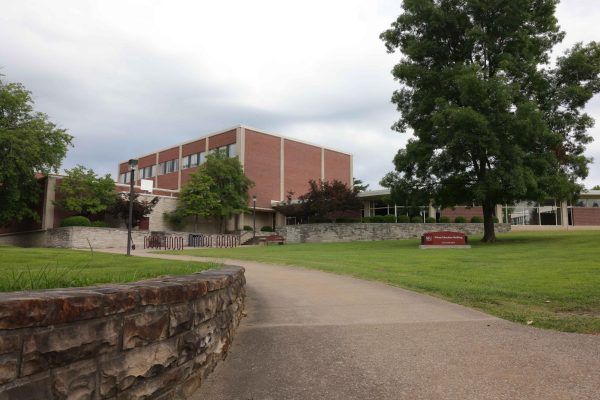Creosote: The toxin holding America together
The Koppers tie plant site used more than a half-dozen chemicals to treat wood products with preservatives for use on railroad tracks, telephone poles and other important wooden pieces of American infrastructure before its closing in 1991.
A report by the United States Forest Service from 1909 describes how creosote wood treatment was a cheap alternative to other less dangerous options. This made it popular for use in infrastructure building projects at a time when railroads and utility lines were being expanded throughout the nation.
Creosote was the primary chemical used, but other elements and compounds, including arsenic and toxic dioxin compounds, were also commonly used. These hazardous materials were at the site according to an Illinois Environmental Protection Agency (EPA) site report.
Advertisement
According to the EPA report, creosote comes in multiple forms, but the most common are coal-tar creosote and wood-tar creosote. These are produced through burning their titular materials and distilling the resulting tar along with arsenic and other chemicals released by the burning into a liquid which can be injected into wood to prevent decay.
The EPA report also describes an incident in 1939 in which an undrained tank of creosote was intentionally dumped onto the ground to prevent an explosion of the extremely flammable substance. It also states how the compound was regularly spilled and released during routine storage and storage.
The Agency for Toxic Substances and Disease Registry (ATSDR), a division of the Center for Disease Control (CDC), released a report on creosote detailing how it contaminates the environment as well as how it affects plants, animals and people exposed to the substance.
“Coal-tar creosote is released to water and soil as a result of its use in the wood preservation industry,” the ATSDR said. “In the past, waste water from wood treatment facilities was often discharged into unlined lagoons.”
According to the report, this sludge contained some compounds which were water soluble and others which would take much longer to decompose. Many of the compounds which take longer to break down remain toxic, even as they leech through their lagoons, into the soil and groundwater underneath.
The ATSDR stated how exposure of humans to creosote can be made through the skin, through inhalation exposure to airborne volatile compounds released during burning and distillation and through ingestion of contaminated food and/or water.
“Skin cancer and cancer of the scrotum have resulted from long term exposure to low levels of creosote, especially through direct contact with the skin during wood treatment and during production or manufacture of creosote-treated products,” the ATSDR said.
Advertisement*
Higher doses of exposure in a short period of time were shown to lead to skin rash, chemical burns, convulsions, mental confusion, kidney and liver problems, unconsciousness and death according to the report.
Chaparral creosote, derived from burning the chaparral bush and leaves, is used in small amounts in some commonly available commercial products, most notably being found in some herbal remedies and psoriasis shampoo. This form, while potentially dangerous in large doses, is not as dangerous as the exposure one can be given through soil, air and groundwater contaminated with wood or coal-tar creosote.
In Carbondale, a local community action group known as the Concerned Citizens of Carbondale (CCC) raised a monument in Attucks Park to celebrate the workers of the former Koppers site and to raise awareness to the ongoing effects of the site’s contamination. A website was created by the CCC as a part of the memorial to detail the history of the community’s interaction with the site.
[see more: ]
“Located in the Black, underserved neighborhood of the city, it employed mostly Black workers at a greatly reduced wage,” the CCC website said.
According to the site, the men working at the plant would routinely be drenched in creosote and other toxic chemicals. This contamination would be so complete that workers would have to bury their clothing in their yards to remove some of the toxins before they could be washed clean.
“In addition to this method of spreading the toxins to the neighborhood, the air, water and soil in the area also became contaminated with the chemicals,” the CCC said. “This resulted, and continues to result in a high rate of cancer in the neighborhood, particularly multiple myeloma, which can be directly linked to creosote poisoning.”
The site was closed for active production in 1991, but it was only in 2004 that a decision was reached by the EPA to begin soil remediation in an effort to decontaminate the area. According to their report, Beazer East Inc., the company which purchased the property following its closing, began initial decontamination efforts in 2004 with efforts from Beazer and the EPA continuing to this day.
At the start of the decontamination process, the field was visibly contaminated with creosote, according to the EPA report. This was compounded by the lack of barriers around the contaminated property, exposing children and families living nearby to the carcinogenic material readily accessible on the ground for children to be exposed dermally and ingested with food when hands went unwashed.
Cleanup efforts included removing acres of soil as well as draining and clearing and moving a portion of a nearby creek while placing an engineered cap over the remaining contaminated soil to prevent additional rainwater contamination while the contaminated soil and groundwater underneath are contained to the site.
The EPA is to monitor the contamination of the groundwater and soil in the area as part of the remediation process. However, this has sparked some controversy from the community.
According to the CCC, the EPA prioritized testing on the property and north of the property, the direction the nearby stream flowed. However, residents from the nearby predominantly Black community to the south of the property asked for their property to be tested as well
This testing took place in April 2005 and deemed the land free of contamination, though residents and the CCC believe the tests were inaccurate as testing only penetrated through six inches of topsoil and did not not test the groundwater underneath.
[see more: ]
“Many of our residents that worked at Kopper’s, children, spouses and neighbors that were exposed to the toxins have died with multiple myeloma, sarcoidosis, heart attacks, and many other diseases,” the CCC said. “We have contacted lawyers, our senators and congressmen for help but to no avail.”
In 2013 Brightfield, a company which uses the formerly contaminated areas to set up solar panel arrays, was given a permit to develop the area. Following a three year period of inactivity on the land, the permit expired and was not renewed when applied for in 2017.
EPA reports determined in March 2019 additional contaminants were found outside of the initial remediation area, including to the south closer to the residential neighborhood. Additional efforts to decontaminate the area began in Nov. 2020 and were declared complete in April 2021.
This declaration generated an outcry from the CCC who still believe adequate testing has not been conducted in their neighborhood.
“We are helpless in this fight because we are unable to hire an attorney, have our land tested or get a public health assessment,” the CCC said. “Our voices remain unheard by the State EPA, US EPA and the City of Carbondale.”
Staff reporter William Box can be reached at [email protected] or on Twitter at @William17455137. To stay up to date with all your southern Illinois news, follow the Daily Egyptian on Facebook and Twitter.
Advertisement













